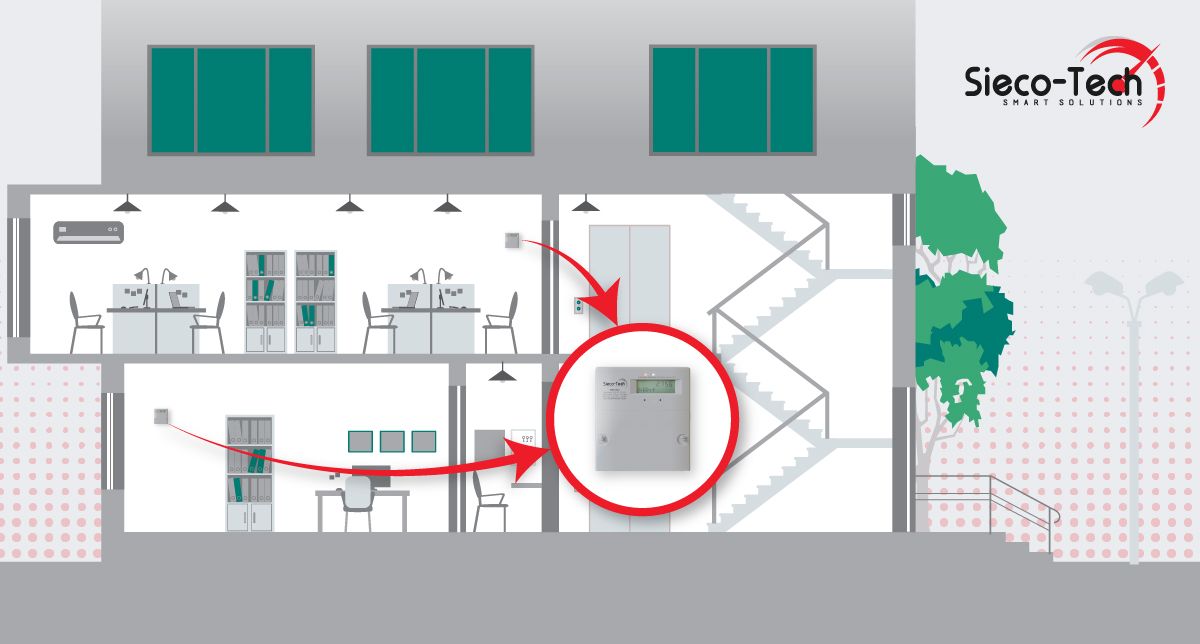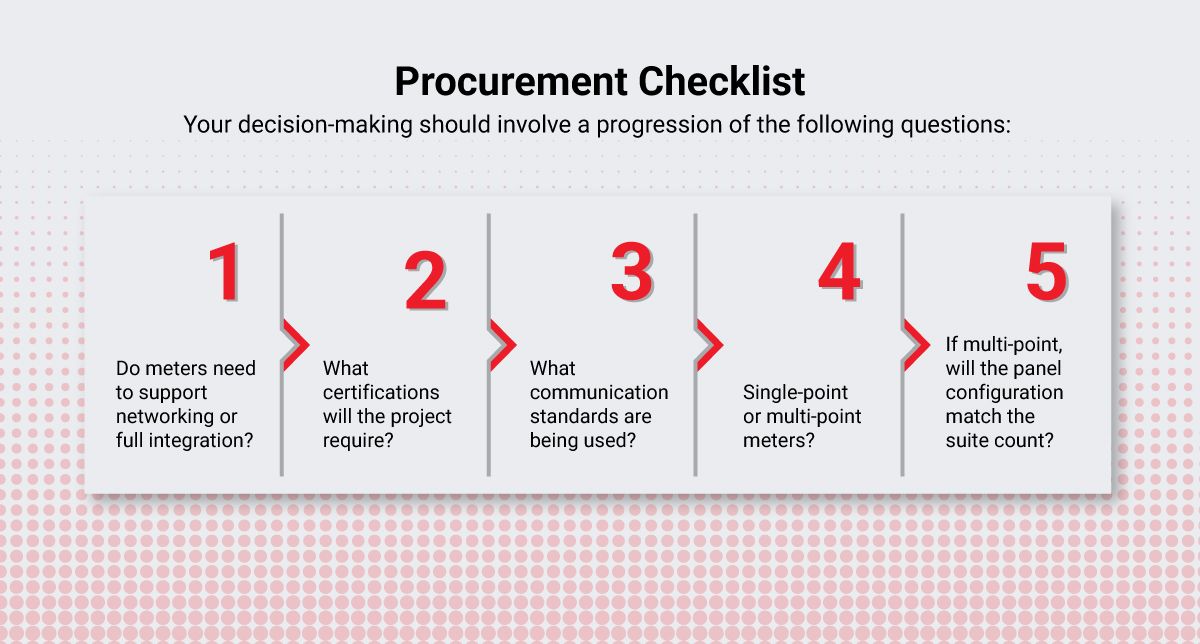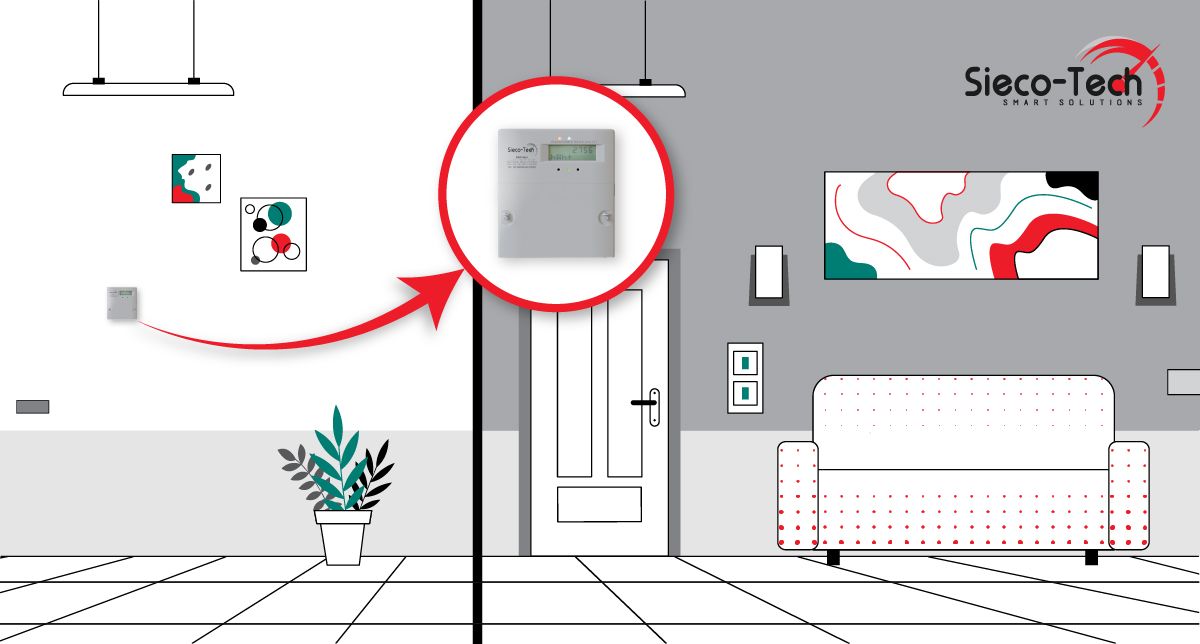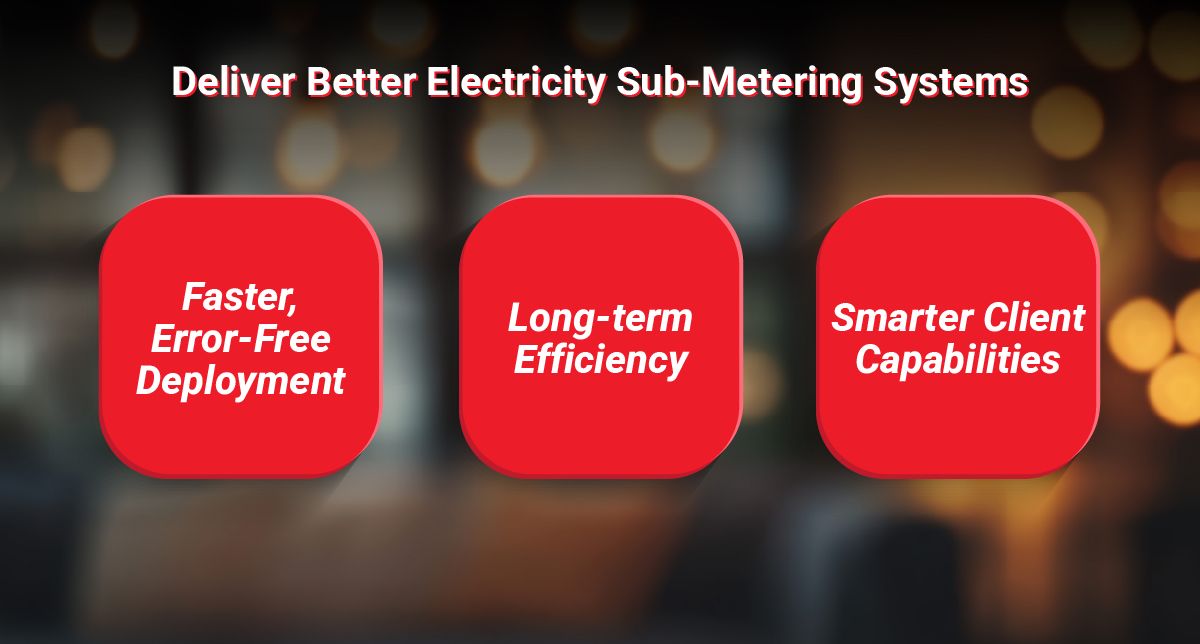Choosing the Best Electricity Sub-Metering Systems

Electricity sub-metering is becoming a mainstay in the building services industry. Property owners want consumption-based billing, hands-off management and better data, and they’re depending on sub-metering providers to make that happen.
If you are an energy service company (ESCO) or sub-metering provider, you know the basics. What matters more is how those units perform in the field. How fast they install. How often they fail. How painful they are to maintain. That’s where the real cost and value live for you.
This guide breaks down what installers, project managers, and contractors should look for in an electricity sub-metering system to deploy reliable infrastructure that keeps your bottom line strong AND keeps clients renewing contracts.
- Procurement checklist for electricity sub-metering projects
- How to choose the best smart energy meters
- Specs that lower lifetime maintenance costs
To start, we’re going to look at the step that lays the foundation for an entire project — choosing the right electrical sub-meter.
Electricity Sub-Metering Specs, Format, and Fit
Meter selection is the first critical step in a service deployment. The type, design and functionality of an electrical sub-meter will affect every phase of a project, from layout to installation, system integration, and long-term maintenance.
Choosing the right electricity sub-metering system requires matching the best products to your application.
Procurement Checklist for Electricity Sub-Metering

Your decision-making should involve a progression of the following questions:
- Do meters need to support networking or full integration?
- What certifications will the project require?
- What communications standards are being used?
- Single-point or multi-point meters?
- If multi-point, will the panel configuration match the suite count?
Let’s quickly dive into each of these questions and what they entail.
1. Does the Metering System Fit Your Networking Needs?
This is the AMR vs. AMI decision.
AMR (automatic meter reading) systems store usage data that your team collects on-site during visits. AMI (advanced metering infrastructure) smart meter systems transmit usage data automatically, with two-way communication for remote monitoring, real-time alerting, and integration with billing or building systems.
If your business is structured around site reads, manual-read AMR electric meters will be enough. If integration is required, you will need smart AMI energy meters.
2. What Certifications are Required?
Compliance is a deal-breaker. If tenants are billed from these meters, or if the project is tied to rebates or energy incentives, certification is mandatory.
Look for Measurement Canada type approval and ANSI C12.20 Class 0.5 accuracy in the U.S. Depending on a project’s location, additional verification requirements and seals will be required during installation.
3. What Communication Protocols Are Being Used?
A meter’s communications format has to match the building environment. Will meters need to send data over RS-485, Ethernet, RF, or PLC communication technologies?
The decision depends on distance, interference, and infrastructure. A high-rise with dense concrete walls may favor a wired backbone, while a sprawling apartment complex may be based on RF.
4. Single-Point Or Multi-Point Meters?
Single-point energy meters are suitable for retrofits and smaller projects, where they need to be installed within a unit itself.
Multi-point electric smart meter panels are usually more efficient when metering a larger number of units for an office building, apartment complex, or condo with electricity closets. Instead of installing dozens of individual meters for a single floor, one panel can be used to monitor multiple suites.
5. How Many Meters or Panels Do You Need?
If your project is using single-point meters, you need to purchase one for each suite.
Most multi-point panels come in fixed sizes: 9-point, 12-point and 24-point are the most common. You’ll need enough panels to supply a meter point for each suite. Use the best configuration to minimize the number of unused meter points.
Final note: What Is Your Timeline?
A system can only be installed if it shows up on time. Some manufacturers keep stock and can ship right away. Others build panels to order, which might push delivery out by weeks or longer.
Always confirm lead times before you lock in an order. If the schedule is tight, availability may outweigh different price points or differences on a spec sheet.
Get Expert Help With Meter Selection
Looking for guidance on selecting the right sub-meters for your next project? Our team can walk you through panel sizing, protocols, and certification requirements.
Narrowing down the procurement process with these questions will quickly give you a list of qualified products and manufacturers. However, making a final decision from this simplified list isn’t as easy, especially when finalists are all competitive.
Let’s look at key areas where different sub-metering systems can impact your short and long-term services.
Deliver Better Electricity Sub-Metering Systems

Electricity sub-metering systems can start to all look relatively the same on spec sheets. However, gaps between systems begin to show up as quickly as on a job site. Those gaps become glaring when you’re managing hundreds of meter points across multiple buildings.
The impact of even seemingly small features can quickly magnify across your portfolio.
Here are three features of an electrical smart meter system you should ask about:
Faster, Error-Free Installation
Wasted meter-points, work intensity, and errors increase electric sub-meter installation costs and can immediately threaten a project’s budget.
Reduce wasted meter points.
Standard multi-point panels often come in fixed meter points, such as 9, 12 or 24. If the suite count doesn’t line up, you end up paying for points that sit empty.
Those stranded points are wasted spend and larger enclosures you didn’t need. Choosing systems that scale more precisely to the job prevents the purchase of meter points that are never used.
Compact, installer-friendly design
Electrical closets are cramped, conduit routes aren’t always predictable, and wall space is at a premium. A compact, low-profile panel design makes installs faster and keeps layouts cleaner. The more intuitive the component layout, the less time crews spend rerouting or improvising in the field.
Built-in Configuration and Accuracy
Manual setup introduces errors. Systems that automate configuration with pre-addressed meter points, auto-mapping, or self-checks cut down on mistakes that show up later and complicate billing, verification, and S-E-02 re-verification.
Accuracy during meter commission will help avoid callbacks, billing errors, and disputes later on.
Long-term Electricity Sub-Metering Efficiency and Viability
Costs that reduce margins often emerge after the deployment of an electricity sub-metering system. How well a system holds up over years of operation determines how much time and labor are required, and ultimately, the profitability of a contract.
Long Battery Life
Meters are expensive to service on-site. The longer the battery life on a meter, the fewer service tickets, the fewer data gaps, and the fewer emergency site visits.
For providers managing large portfolios with potentially thousands of meters across numerous properties, battery life directly translates into lower operating costs and predictable maintenance schedules.
Multiple voltage Inputs
Having the ability to support multiple voltage inputs within the same meter panel reduces the quantity of meters required in commercial applications.
Time-Synchronized Data Logging
Interval data is only useful if it’s accurate and consistent.
Time-synchronized logging unifies meter transmissions across a system to simplify billing, compliance checks, and energy audits.
Ease of Service
Verification and re-verification measures are a major pain point in sub-metering.
Features that allow service, module swaps, and part replacements without breaking unnecessary metrology seals prevent re-inspections and save both time and compliance headaches.
Cut Lifetime Sub-Metering Costs & Parts Replacements With Sieco-Tech
Ready to deliver better electricity sub-metering for your clients?
Sieco-Tech’s innovative smart energy meter systems are not only the best price point, but also install faster, cost less to maintain, and integrate with the platforms your customers expect.
Strengthen Client Confidence with Smarter Capabilities

Sub-Metering companies don’t just install systems; they manage business relationships. Electricity systems that adapt easily, communicate clearly, and identify issues before they escalate are the ones that keep contracts strong.
Open Protocols
Closed systems lock you into one vendor and limit your ability to adapt when client needs change.
Meters that support open standards like Modbus, BACnet, DLMS, G3-PLC, Wi-SUN RF, and MQTT make it simple to integrate with BMS platforms, energy intelligence tools, or new billing software. This type of flexibility prevents awkward conversations about system limitations and keeps your service aligned with market expectations.
Event and Alarm Reporting
Clients expect systems to do more than tally kilowatt-hours. Event and alarm reporting lets you flag tampering, detect outages, or spot unusual loads in near real-time. That means fewer disputes, faster response times, and a service experience that feels proactive instead of reactive.
Delivering a system that’s open, dynamic, and alert-ready builds confidence with clients for long-term partnerships and keeps your contracts secure over the long term.
Sieco-Tech Electricity Sub-Metering Transforms Operations
From procurement to long-term operation, Sieco-Tech supports sub-metering providers with technology that offers easier operation and supports customers’ evolving needs.
Our smart meter systems are backed by a team that understands the challenges of installation, verification, and integration.